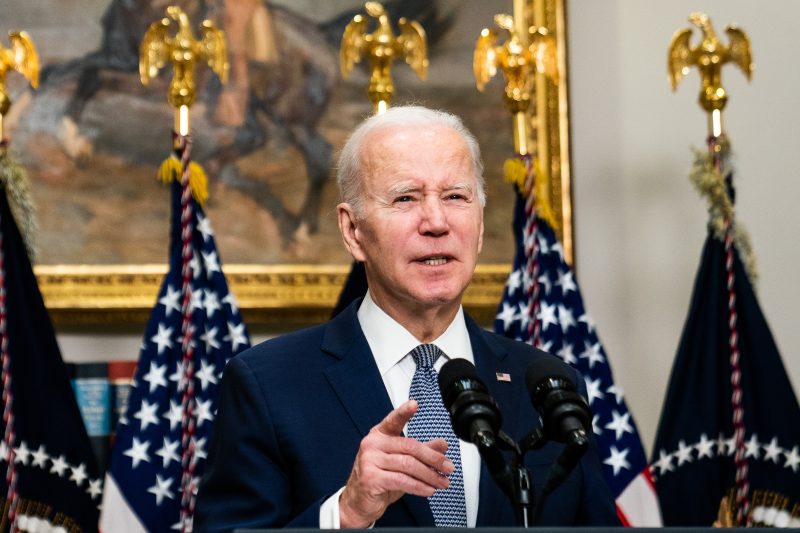President Biden leaves no doubt that he intends the federal government to be a “model employer.”
That phrase is used repeatedly in Biden administration documents released with his fiscal 2024 budget plan, but reality can get in the way.
One section of the documents demonstrates Biden’s determination to give meaning to the words. The federal employee chapter of the nearly 300-page Analytical Perspectives, a narrative section of the budget released Monday, outlines his four-point strategy “to strengthen and empower the Federal workforce.”
Those points include hiring the most qualified employees for the right jobs while reflecting the nation’s diversity; making certain federal employees are engaged, supported and empowered, with opportunities to join a union; using lessons learned, including on telework, from the coronavirus pandemic to prepare for the future of federal work; and rebuilding the federal personnel system to, among other things, mitigate workforce skill gaps.
“Our number one mission is to equip Federal agencies with the necessary resources to attract, hire, develop, and retain talented workers to make our government more efficient, resilient, and effective, while positioning the Federal government as a model employer,” Jason Miller, an Office of Management and Budget deputy director and Kiran Ahuja, Office of Personnel director, wrote in a blog post.
Key to Biden’s strategy are “historic workforce investments.” First on that list is his proposed 5.2 percent federal pay raise, which would be the largest boost since President Jimmy Carter’s administration. “Between 2009 and 2021, U.S. average worker pay rose by 39.9 percent while Federal civilian pay increases amounted to only 26.9 percent, yielding a pay gap of 13 percentage points,” a differential, according to the workforce chapter, “creating attrition risk within the existing workforce and reducing the competitiveness of Federal jobs.”
Another item on the list is “prioritizing robust internship” programs and seeking to “rebuild the Federal Government’s lagging early-career talent pipeline.” The federal government already has internship programs, but “these opportunities are often underutilized,” according to the budget document. Paid internships, it said, can build professional pipelines for agencies, allowing them “to train employees for specific business needs and critical skillsets.”
Max Stier, president and chief executive of the Partnership of Public Service, a think tank that focuses on the federal government, welcomes the budget’s attention to internship programs, but he warns improving them would require a difficult “culture change” in federal agencies. There are very few agencies, such as NASA, “that approach student internships as part of their strategic human capital planning,” Stier said. “And more often than not, they are friends and family programs.” Getting even less attention, he added, are efforts to retain interns for permanent federal employment.
The president’s vision for Uncle Sam as a model employer is obstructed by the reality that federal agency actions can conflict with Biden’s staunch pro-union stance and federal pay does not always reflect his strong position on equity in all government does.
On the same day the administration released the budget narrative that called for “strengthening relations with Federal employee unions,” the largest one, the American Federation of Government Employees (AFGE) issued a statement by National Veterans Affairs Council President Alma Lee blasting the Department of Veterans Affairs for “acting in a way totally contrary to President Biden’s commitment to be the most pro-union president in history.”
AFGE trumpeted last week’s arbitrator’s finding that VA engaged in unfair labor practices and ordered the department “to cease and desist from … surface bargaining and bad faith bargaining.”
Asked for comment, VA press secretary Terrence Hayes’s statement said bargaining with AFGE is progressing and “a unionized VA workforce is a strong VA workforce.” His statement, however, ignored the arbitrator’s order against the department.
The proposed federal pay raise, which could be opposed by congressional Republicans, also has problems living up to the hype as long as gender and racial pay gaps remain.
Tuesday was Equal Pay Day — one day after the administration’s budget narrative said the proposed 5.2 percent pay hike would assure “fair and equitable compensation.” That day symbolizes how far into the new year women need to work to be paid the same amount men were paid the previous year. Biden’s budget narrative, however, makes no mention of the gender pay gap in the federal government — although his administration has previously addressed the problem.
There are conflicting estimates of how large a pay gap persists in the federal government. A 2020 Government Accountability Report says the federal gender gap narrowed significantly from 19 percent in 1999 to 7 percent in 2017, which is about the same as the 6 percent gap the Office of Personnel Management (OPM) cited in an email Wednesday. But in December 2022, a GAO letter to members of Congress indicated federal sector women were paid 85 cents for every $1 men made in 2021. That’s a 15 percent gap and more than twice the 2017 figure. GAO said its discrepancies were due to differences in data sets and methodology. The 2020 report used actual pay data to calculate average pay for full time and part time employees. The 2022 letter used estimated wages to calculate median pay for full time workers only.
To eliminate whatever the gap is, OPM issued a proposed rule last year that seeks to “advance pay equity throughout the federal government … by revising the criteria for making salary determinations based on salary history.” A year ago this month, Biden issued an executive order to do the same thing for federal contractors.
But the problem isn’t fixed yet.
“It’s unconscionable,” complained Gloria L. Blackwell, the American Association of University Women’s chief executive, “for a gender pay gap to exist in the federal workforce.”



























